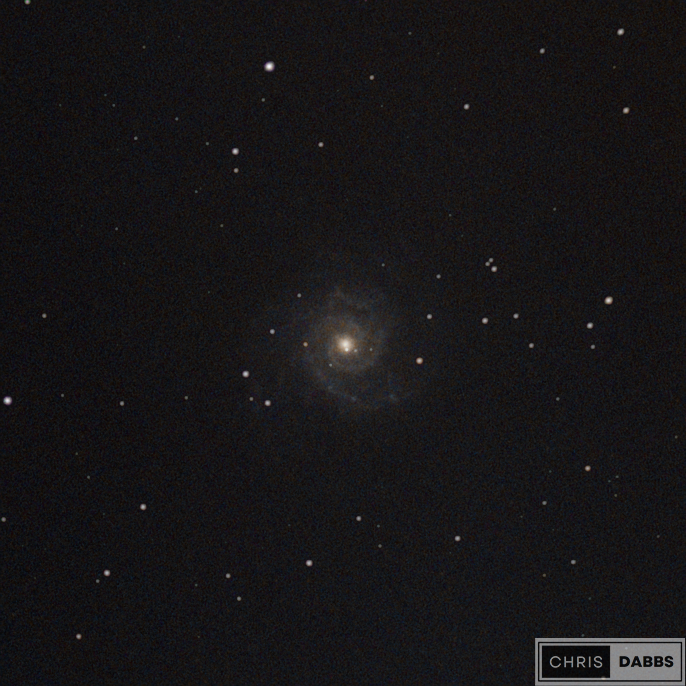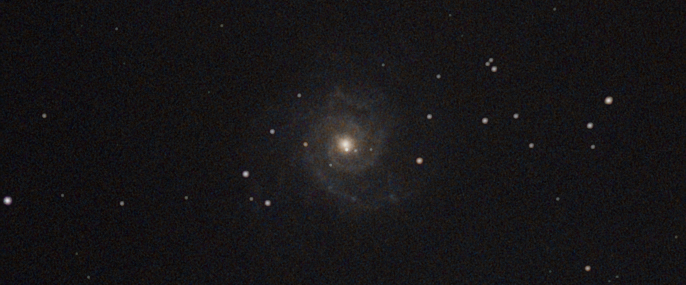
I have to say that I find the Phantom Galaxy, or Messier 74 as it’s also known, (M74) a mesmerisingly beautiful sight.
It’s kind of spooky, otherworldly and a living testament to the mystery and absolute magnificence that is the universe.
M74 is located within the Pisces constellation at an incredible distance of around 32 million light-years away from us.
Personally, I really do struggle to understand the physics that are involved with this sort of distance.
So, let me try and explain it in a way we can both wrap our heads around…hopefully to understand the enormous distances involved.
Owing to its distance from Earth, visiting the M74 Phantom Galaxy is an impossible dream. Because, even if we could travel at the speed of light (around 300,000 km per second), it would take us 32 million years to get there.
And, as light travels at the “speed of light” (!) the light I captured in this image left there 32 million years ago.
The mind boggles!
To put this distance into some sort of perspective, our fastest spacecraft, the Parker Solar Probe, reaches around 430,000 miles per hour, a mere crawl compared to the speed of light.
So, at even at the incredibly fast speed of 430,000 miles per hour, the journey to the M74 Phantom Galaxy would take us billions of years!
M74 is known as the Phantom Galaxy due to just how faint it is in the night sky. This makes it extraordinarily difficult for amateur stargazers to see, let alone photograph. M74 is an intriguing target for scientists and astronomers alike as it’s classified as an “Sc” galaxy, which means it’s a spiral galaxy with loosely wound arms.
Despite the Phantom being huge and roughly the same size as our own Milky Way galaxy, its low surface brightness can make it invisible to smaller telescopes and unaided eyes.
But, the effort to view the galaxy is ultimately worth it as studying and observing galaxies like M74 gives us an insight into the origins of the universe, the formation and evolution of galaxies, and the potential to search for life beyond our solar system and galaxy.
It’s a pretty simple task for the Hubble or JWST telescopes to image, but for us mere mortals, the patience and technical knowledge required to create this image is worlds away from snapping away on a smartphone and letting the phone do all the work.
As our technology and understanding progress, who knows? Maybe one day, we might find a way to explore the M74 Phantom Galaxy up close.
For now, M74 remains a beautiful spectre in our telescope’s eyepieces offering a fascinating glimpse into the grand cosmic theatre of the universe.


